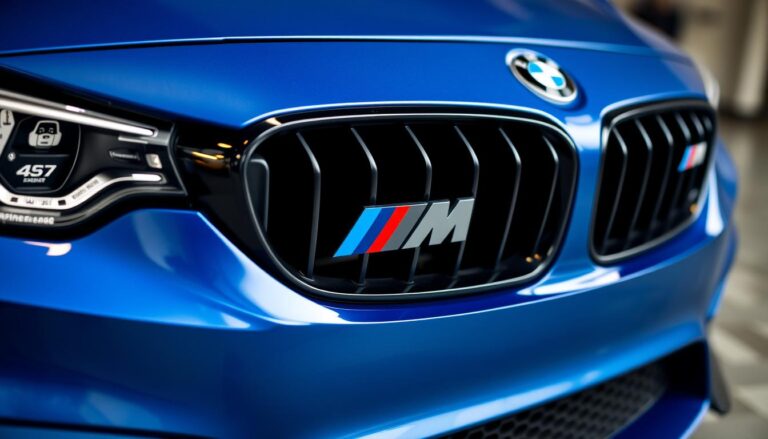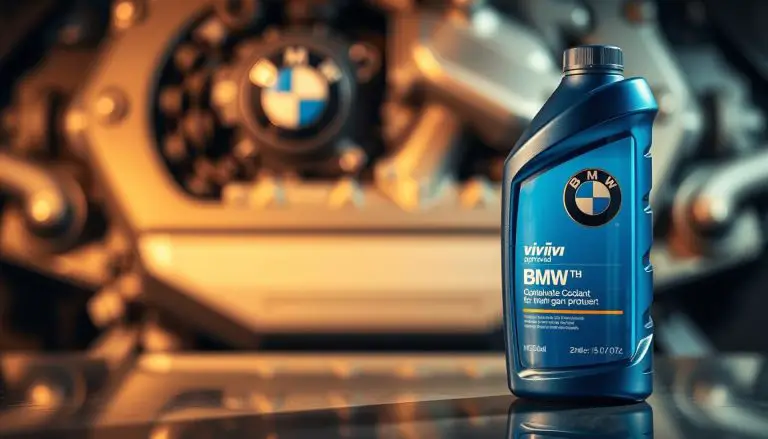Ensuring your BMW software remains current is paramount for maintaining peak vehicle performance and safety. Regular updates significantly elevate your driving experience, refining functionalities such as navigation, entertainment, and driver assistance systems.
The process of updating your BMW’s software, while initially intimidating, is remarkably straightforward when segmented into clear, actionable steps. This article will serve as your comprehensive guide, detailing the update process to ensure your vehicle operates at its zenith.
Key Takeaways
- Understand the importance of keeping your BMW software current.
- Learn the 5 easy steps to update your BMW software.
- Discover how updates can improve your vehicle’s performance and safety.
- Find out how to check if your BMW is eligible for an update.
- Understand the benefits of having the latest software installed.
Understanding BMW Software Systems
BMW’s iDrive and ConnectedDrive systems transcend mere technological advancements, serving as portals to a more interconnected driving experience. These sophisticated software systems are pivotal to the modern BMW, elevating both the driving experience and vehicle management.
What is BMW iDrive and ConnectedDrive?
The iDrive system, an innovative, intuitive interface, controls the vehicle’s infotainment, navigation, and various other functions. It is crafted to deliver a seamless user experience, enabling drivers to access a broad spectrum of features with unparalleled ease. ConnectedDrive, conversely, bridges the vehicle to the digital realm, offering services such as real-time traffic updates, remote services, and more.
“The iDrive system has revolutionized the way we interact with our vehicles, making it easier to access vital information and entertainment on the go,” remarks a BMW aficionado.
“The integration of iDrive and ConnectedDrive has significantly enhanced the driving experience, providing drivers with real-time information and connectivity on the go.”
Types of BMW Software Updates
BMW software updates are predominantly categorized into two types: functional updates and feature updates. Functional updates aim to enhance the performance and stability of the iDrive system. Feature updates, on the other hand, introduce new functionalities or refine existing ones.
| Update Type | Description | Benefits |
|---|---|---|
| Functional Updates | Improve system stability and performance | Better user experience, fewer glitches |
| Feature Updates | Add new features or enhance existing ones | New functionalities, enhanced driving experience |
Benefits of Regular Software Updates
Regular software updates are indispensable for maintaining the health and performance of your BMW’s iDrive and ConnectedDrive systems. These updates not only ensure that your vehicle’s software remains current but also confer several pivotal benefits.
- Enhanced system performance and stability
- New features and functionalities
- Improved security through the latest security patches
- Better compatibility with external devices and services

By ensuring your BMW’s software is updated, you maximize the potential of your vehicle’s advanced technology. This results in a more connected, efficient, and enjoyable driving experience.
How to Update BMW Software? A Complete Overview
BMW software updates are imperative for sustaining your vehicle’s performance and safety attributes. Regular updates can elevate your driving experience by refining the functionality of your BMW’s systems.

Over-the-Air vs. Dealer Updates
BMW proffers two principal avenues for software updates: Over-the-Air (OTA) updates and those necessitating a dealership visit. OTA updates are transmitted directly to your vehicle via a wireless link, facilitating effortless maintenance without dealership attendance.
Conversely, certain updates demand a visit to a BMW dealership, notably those involving substantial alterations or updates to pivotal systems. It is crucial to acknowledge that not all updates are feasible over-the-air, with some requiring a dealership visit.
Compatible BMW Models and Series
Most contemporary BMW models are equipped to receive software updates, either through OTA or at a dealership. The compatibility of your BMW with software updates hinges on the model and series. Typically, newer models from the recent past are more apt to support OTA updates.
| BMW Series | Model Years | OTA Update Capability |
|---|---|---|
| 3 Series | 2019-2022 | Yes |
| 5 Series | 2020-2022 | Yes |
| X5 | 2018-2022 | Yes |
Update Frequency and Availability
BMW periodically disseminates software updates to enhance vehicle performance, rectify issues, and introduce new functionalities. The cadence of these updates fluctuates, yet BMW typically releases substantial updates every few months.
It is advisable to periodically verify your BMW’s software version and update as required to maintain your vehicle in optimal and secure condition.
Preparing for Your BMW Software Update
The preparation of your BMW for a software update is an indispensable step, ensuring a seamless process. A successful update necessitates verifying your current software version, acquiring the requisite tools, and creating a backup.
Checking Your Current Software Version
To verify your BMW’s current software version, navigate through your iDrive system. This information is paramount, as it determines the necessity for an update.
- Access the “Settings” menu within your iDrive.
- Select “Software Update” or an analogous option.
- Verify the current version number displayed.
Necessary Tools and Requirements
For a BMW software update, a stable internet connection and a compatible USB drive, if updating via physical medium, are required. Ensure your vehicle is parked in a location with a robust internet signal.
| Update Method | Requirements |
|---|---|
| Over-the-Air (OTA) | Stable internet connection, latest iDrive version |
| USB Drive | Compatible USB drive, downloaded update file |
Creating a Backup Before Updating
Before commencing the update, it is advisable to back up your data. This precautionary measure mitigates the risk of data loss during the update process.
“Backing up your data is a good practice before performing any significant software update.”
To create a backup, follow these steps:
- Access the “Settings” menu.
- Locate the “Backup and Restore” option.
- Adhere to the on-screen instructions to complete the backup.
Step 1: Connecting Your BMW to a Stable Power Source
Ensuring a stable power connection is paramount to prevent interruptions during the BMW software update. A consistent power supply is crucial for a seamless update, avoiding any potential disruptions.
Why Power Stability Matters During Updates
Power stability is paramount during the BMW software update process. Any power interruption can potentially corrupt the system or cause it to malfunction. The update process involves rewriting the vehicle’s software, necessitating a stable power supply to prevent system instability.
Consequences of Power Interruption: Interrupting the update can lead to system failures, necessitating costly repairs at a dealership or authorized service center.
Recommended Power Sources
For a successful update, it is advisable to connect your BMW to a reliable power source. Here are some recommended options:
- A standard wall outlet using the vehicle’s charger.
- A high-capacity battery maintainer or tender, designed for automotive applications.
Note: Avoid using low-quality or makeshift power sources, as they may not provide the necessary stability.
Precautions to Take
To ensure a smooth update process, take the following precautions:
- Ensure the vehicle’s battery is in good condition before starting the update.
- Use a power source that is known to be reliable and stable.
- Avoid any electrical surges or spikes during the update process.
By adhering to these guidelines, you can guarantee a successful BMW software update process.
Step 2: Accessing the BMW Software Update Menu
The second step in ensuring your BMW’s software remains current involves navigating to the software update section. This entails comprehending the utilization of your BMW’s iDrive system to locate and access the update menu.
Navigating the iDrive System
The iDrive system, BMW’s sophisticated interface, manages various vehicle functions, including navigation, entertainment, and settings. To access the software update menu, one must proficiently navigate through the iDrive system.
Initiate by turning on the ignition and awaiting the iDrive system’s boot-up. Upon readiness, employ the iDrive controller or touchscreen (dependent on your BMW model) to access the “Settings” or “Setup” menu. This is typically denoted by an icon resembling a gear or a wrench.
Finding the Software Update Option
Within the “Settings” or “Setup” menu, seek an option associated with “Software Update” or “System Update.” This might be situated under a submenu labeled “System” or “Vehicle Software.” The precise path can differ based on your BMW model and the iDrive system version.
Upon locating the software update option, select it to enter the update menu. Here, you will have the capability to check for updates, view the current software version, and commence the update process.
Differences Between iDrive Versions (5, 6, 7, 8)
It is crucial to acknowledge that various iDrive system versions (such as iDrive 5, 6, 7, or 8) exhibit distinct menus and navigation paths. For example, newer iterations like iDrive 7 and 8 often present a more streamlined process and an enhanced interface compared to their predecessors.
Should you be uncertain about your iDrive version, this information can typically be found within the “Settings” or “About” section of the iDrive menu. Recognizing your iDrive version facilitates a clearer understanding of the specific steps necessary to access the software update menu on your BMW.
Step 3: Downloading the Latest BMW Software
The act of downloading the latest BMW software is paramount for maintaining your vehicle’s optimal functionality and ensuring it remains current. This endeavor necessitates a connection to BMW servers, a verification of available updates, and an estimation of the download duration.
Connecting to BMW Servers
To initiate the software download, your BMW must establish a connection to the BMW servers. This connection is typically facilitated through cellular or Wi-Fi, contingent upon your vehicle’s configuration and the iDrive system settings. It is imperative to position your vehicle in an area with a stable internet connection to expedite the download process.
Checking Available Updates
Upon establishing a connection to the BMW servers, the iDrive system will automatically scan for software updates. This process compares your vehicle’s current software version against the latest versions hosted on the BMW servers. If an update is detected, you will receive notification, allowing you to either download it immediately or schedule it for a future time.
Download Time Expectations
The duration required for a BMW software update download is influenced by several variables, including the update’s size, the internet connection’s speed, and the iDrive system’s processing capabilities. Generally, the download timeframe can range from a few minutes to approximately 30 minutes. It is advisable to maintain your vehicle in a stable environment during this period to prevent any disruptions.
Tips for a Smooth Download:
- Ensure a stable internet connection.
- Keep your vehicle in a location with minimal distractions.
- Avoid interrupting the download process.
Adhering to these guidelines and recommendations will facilitate an efficient and seamless BMW software update download, paving the way for a successful installation.
Step 4: Installing the BMW Software Update
Upon successful download, the installation of the BMW software update commences. This phase is pivotal, as it merges the new software with your vehicle’s operational systems.
Starting the Installation Process
Initiate the installation by accessing the “Software Update” section within your iDrive system. Select the downloaded update and opt to install it. Ensure your vehicle is positioned in a secure location and the parking brake is applied, as the installation necessitates a stationary state.
What Happens During Installation
The installation process involves a series of checks and updates to your BMW’s systems. This may entail restarting the iDrive system or other vehicle functionalities. It is imperative to maintain a stable power connection to avoid any disruptions during the process.
Key Steps in the Installation Process:
| Step | Description | Notes |
|---|---|---|
| 1 | System Check | Verifies compatibility and integrity of the update |
| 2 | Update Installation | Installs the new software, potentially restarting systems |
| 3 | Verification | Confirms the update was successful and functional |
Monitoring the Update Progress
Monitoring the installation’s progress on your iDrive screen is essential. The system will display the status and notify you upon completion. Should any issues, such as a failed installation, occur, the system will alert you, potentially necessitating a restart of the process or professional assistance from a BMW dealership.
Patience is paramount during this phase. The installation duration can vary significantly, influenced by the update’s size and your vehicle’s current software configuration.
Step 5: Verifying the Successful Update
Confirming the successful update of your BMW’s software is an essential final step. Post-installation, the vehicle’s system necessitates verification to ascertain the correct installation and operational functionality of the new software version.
Checking the New Software Version
To affirm the update, access the “Settings” or “System” menu within your iDrive system. Here, the current software version should be displayed. Compare this with the intended update version number. A match indicates a successful update.
Steps to Check Software Version:
- Access the “Settings” menu on your iDrive.
- Select “System” or “Software Update.”
- Record the software version number.
- Compare it with the intended update version.
Testing New Features and Functionality
Post-verification, engage in testing the new features and functionalities introduced by the update. This may encompass novel user interface elements, enhanced performance, or additional services. It is imperative to confirm that these features operate as anticipated.
Tips for Testing:
- Investigate new menu options and settings.
- Assess any enhancements in navigation or entertainment systems.
- Verify the functionality of any new services or features.
Post-Update System Reboot
Occasionally, your BMW’s system may necessitate a reboot following the update. This is a standard procedure to ensure all modifications are fully integrated. The reboot process may take several minutes, during which your vehicle’s systems might be temporarily inaccessible.
Adhering to these guidelines ensures that your BMW software update was successfully executed and that your vehicle’s systems are operating with the latest enhancements and improvements.
Conclusion
Ensuring your BMW’s software is updated is paramount for its performance, security, and driving experience. Adherence to the 5 straightforward steps detailed in this guide guarantees your vehicle’s software remains current, thus ensuring optimal functionality. This meticulous approach to software updates is essential for maintaining your vehicle’s peak performance.
The procedure necessitates a stable power connection, access to the software update menu, the download of the latest software iteration, its installation, and a verification of the update’s successful implementation. Regular updates not only refine your vehicle’s performance but also rectify bugs and potentially enhance fuel efficiency.
By consistently updating your BMW’s software, you are assured of a more refined and pleasurable driving experience. For comprehensive insights into BMW software updates and to remain abreast of the latest advancements, consult BMW’s official website and documentation.
FAQ
What is the purpose of updating BMW software?
The primary objective of updating BMW software is to enhance the vehicle’s performance, security, and functionality. This encompasses the iDrive and ConnectedDrive systems, ensuring they operate at peak efficiency.
How often are BMW software updates released?
BMW software updates are disseminated at irregular intervals, contingent upon the update’s nature and the model in question. Generally, updates are forthcoming every few months.
Can I update my BMW software at home?
Affirmative, certain BMW models facilitate over-the-air (OTA) updates, which can be executed from home. Yet, other updates necessitate a visit to a BMW dealership or an authorized service center.
What are the benefits of keeping my BMW software up-to-date?
Maintaining your BMW software current can elevate the vehicle’s performance, augment safety features, and grant access to novel functionalities and enhancements.
How do I check my current BMW software version?
To verify your BMW software version, navigate to the iDrive system. Select “Settings” and then “Software Update” or “System Information.”
What happens if I interrupt the software update process?
Interrupting the software update process can lead to malfunctions in your vehicle’s systems, including the iDrive and ConnectedDrive. It is imperative to permit the update to conclude uninterrupted.
Are BMW software updates compatible with all models?
BMW software updates are generally tailored for specific models and series. It is imperative to verify the update’s compatibility with your vehicle prior to proceeding.
Can I update my BMW software using a mobile hotspot?
While feasible to update BMW software via a mobile hotspot, it is not advisable due to potential data limitations and connectivity challenges. A stable Wi-Fi connection is preferable.
How long does a BMW software update typically take?
The duration of a BMW software update varies, influenced by the update’s type, download size, and internet connection speed. Typically, updates span from 30 minutes to several hours.


